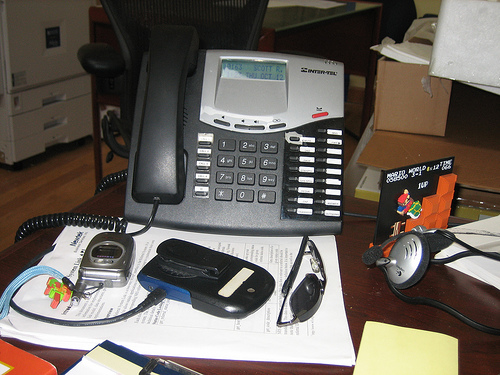Enterprise Mobility: Devices, Security, Design, And Distribution

Editor’s Note: Semil Shah works on product for Swell, is a TechCrunch columnist, and an investor. He blogs at Haywire, and you can follow him on Twitter at @semil.
Every Sunday for this column, I write on something related to mobile. To date, it’s mostly been about consumer-facing apps, device sensors, user interfaces, tactics like push notifications, and a range of other topics. However, I have yet to dig into mobile for more business-facing, enterprise-oriented users and considerations. That’s partly because I do not work at a large company nor too closely with others. Yet recently, in some of my conversations, the topic of mobile apps for enterprise environments has resurfaced. In 2013, I also moderated a panel at a mobile event organized by Emergence Capital, a venture capital firm which focuses on SaaS and created this chart on different type of enterprise apps. While much has been written on the topic, I wanted to write this post with few or no assumptions, from first-principles, and share my thought process about what founders and investors could look for in these kinds of mobile products. Mostly, however, I’d like to learn from you all about what it will take to win in these environments, so please comment or tweet or reach out to me with your thoughts.
Devices: I’ve heard every angle here. At some large companies, employees can bring their own devices to work. The company will support what the employee wants. But, this becomes more difficult as the number of devices increases quickly, device turnover happens faster, and newer devices hitting the market (especially non-iOS) fragment the ecosystem. One founder remarked to me he believes we’ll see a shift from BYOD to CYOD, or “Choose Your Own Device,” where the employer pre-selects a controlled group of devices from which employees can choose. These conditions will certainly be different at each company, depending on what policies they adopt.
Security Compliance: Even prior to NSA revelations, enterprise security is obviously a big deal. This may be why, for instance, larger companies could move to a CYOD world. Companies are concerned about client-side and cloud-based data security, and this is likely heightened today with the latest batch of handsets allowing different forms of filesharing which don’t require traditional data sources to power them. On the employee-side, I’d imagine many may opt to keep their own personal phones active and thereby carry two phones, partly to keep a separation from work and life outside work, and partly because they are concerned about privacy.
Enterprise-focused vs crossover apps: This is the debate around whether the enterprise needs specific app solutions, or whether it’s more likely consumer-focused apps (or one’s that draw from consumer-level principles) are more likely to win. I don’t know what the answer is here, and it seems like there isn’t just one path to success. Products like Box are designed for enterprise-level customers, products like Yammer draw on consumer-level design principles, and products like Mailbox, as just one example, could help its parent Dropbox spread its own suite of apps through the employee ranks at larger companies. Beyond this, we may also “Bring Your Own Apps” in enterprise settings, as well.
And, here’s the important one for me…
Distribution, viral bottom-up, or top-down command? This is the one I wrestle with when I see new teams forming and building new products. I don’t know what the best approach is. The way the world is moving, it would seem, at first, logical to assume workers will start to use consumer-level apps and some will “cross-over” into their work, igniting the spark needed to make it grow among colleagues. This is how apps today get huge and become breakout level. Yet, in a company-setting, there may be a case for employers mandating workers use specific apps, and use them daily. That could force everyone in a company not just download and install a specific required app, but to set notifications, allow location tracking, and use the app multiple times a day.
Today, the top-rated and grossing “business” apps are mostly from legacy providers (like Adobe), apps built on top of enterprise giants (like Salesforce), a few new entrants (like Square), and a slew of small-business related tools, such as scanner apps, and so forth. Perhaps one of my next columns will focus on apps for small businesses, but for now, I’d like to hear your opinions on what enterprise-level apps are doing well, where the opportunities are, what the security concerns will be, and who will be driving distribution. It’s certainly a huge opportunity, and with mobile distribution posing a real challenge to tens of thousands mobile developers, the conditions inside large companies could present attractive opportunities.
Photo Credit: Scott Rubin / Creative Commons Flickr


